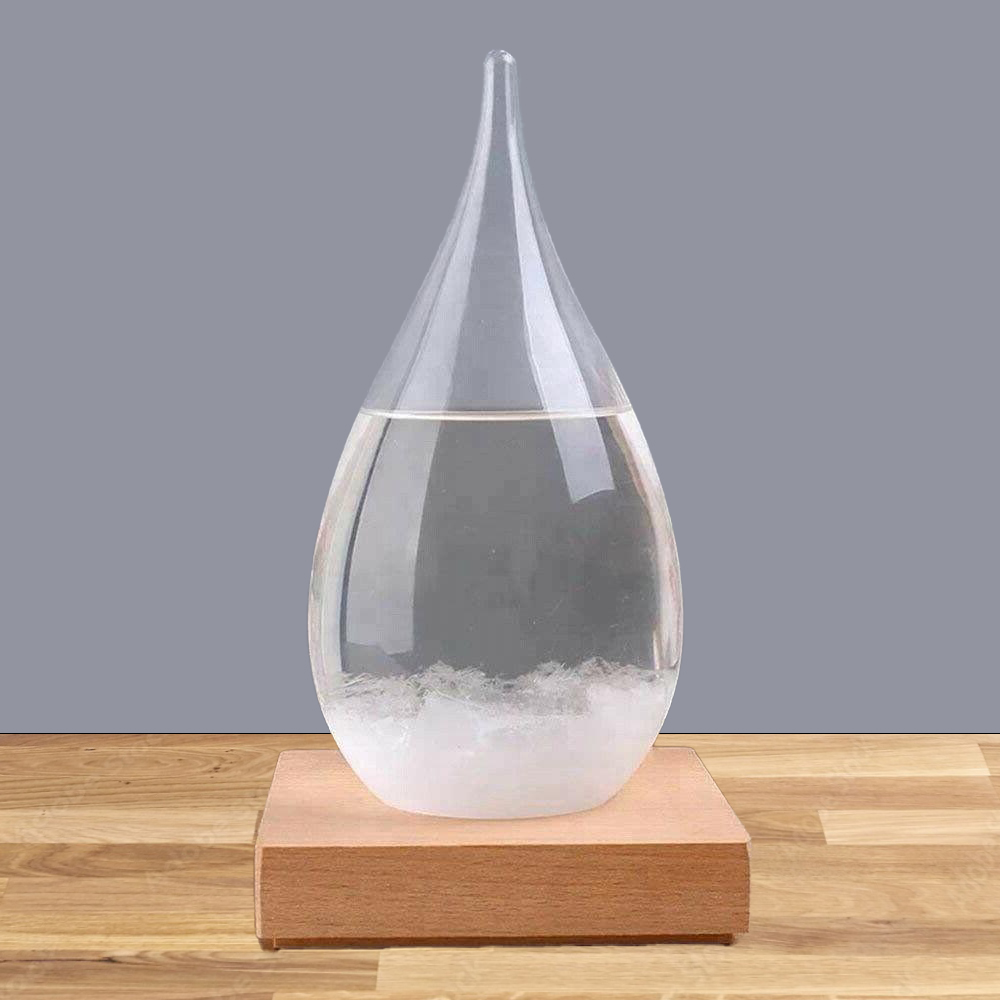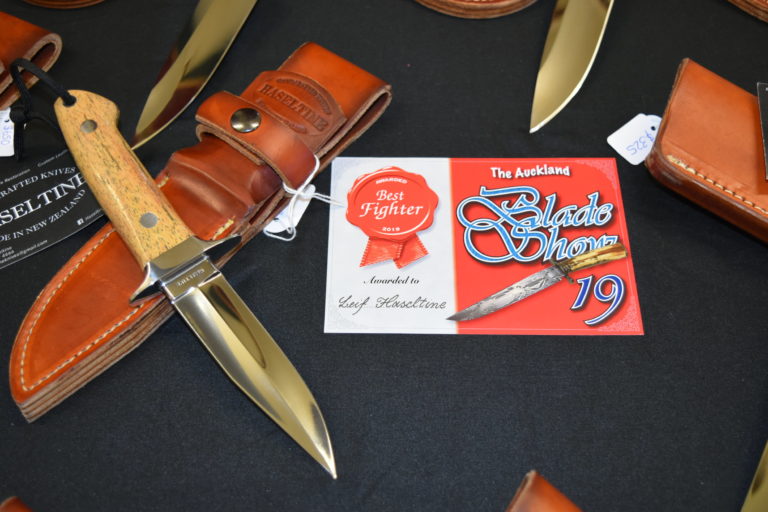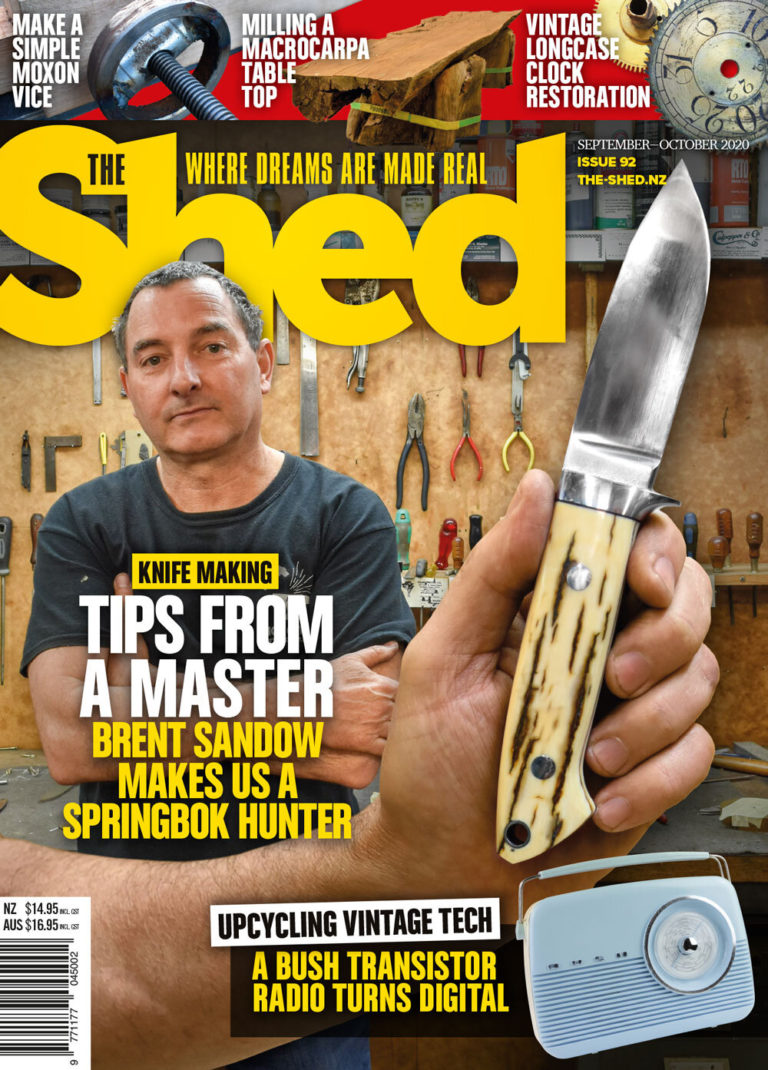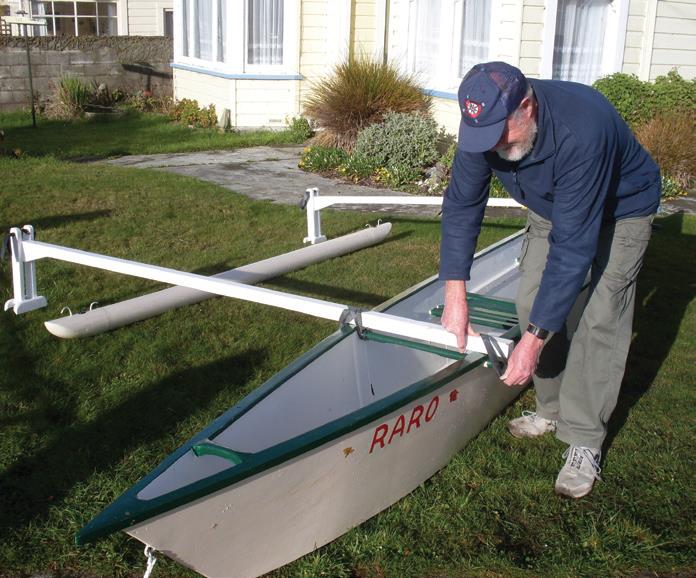Cutting edge
In New Zealand, knife-making is increasing in popularity year by year. If the recent Auckland Blade Show was anything to go by, this pastime is now a full-time career for a large number of sheddies and of enormous interest to the general public. The hundreds who came through the doors over the two-day event are evidence of knife-making’s huge growth over these past few years.
Who are these knife-makers; what separates and what inspires them? Where are they, and what knives and blades do they create?
We’ll soon know more because in this issue of The Shed we profile 36 of NZ’s finest. Read our Who’s Who and Where’s Where in this issue in an extensive rundown of our 36 best Kiwi knife-makers.
“The art of shaping blades is more than a utilitarian act; it is something of a primal impulse, one that predates our relocation from the cave.
Without some form of cutting edge, our ancestors would have struggled to hunt, fish, gather food, build homes, or even defend themselves. Down through the ages, we have used everything, from quartz, flint, pounamu, and obsidian to copper, bronze, iron, and titanium. Today, a worldwide profusion of cutlers, sheddies, and blacksmiths is once again heeding that ancient call: to perfect a version of our most important tool, the knife.
Those who are doing the forging, beating, and grinding in New Zealand are as diverse as the blade and handle shapes they produce. There are teachers and nurses; chefs, lawyers, and engineers; and some who are not yet tertiary students. One thing all makers, suppliers, and even knife importers have in common is their passion for the art and craft of knife-making, coupled with a collective sense of support that they get from being a part of the wider community.”
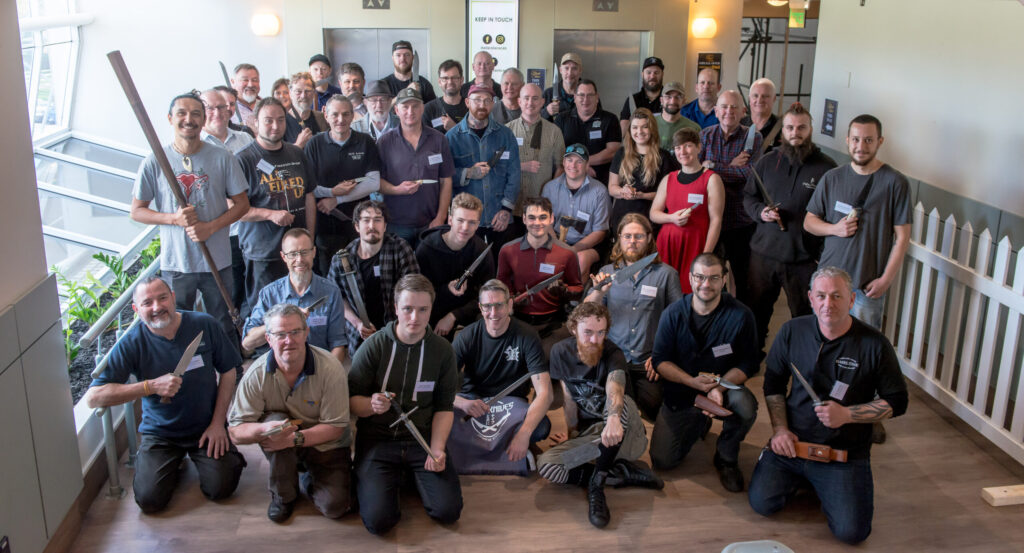
Kiwi ingenuity
After the comprehensively damaged Christchurch central city was sealed off after the 2011 earthquake — causing most of the city’s eating houses to close down — Neville Watkinson could see that his restaurant furniture business was doomed. Before the sale of his premises was completed, he started building a Milford 20 in the loft above the joinery workshop’s office, despite the obvious limitations of the space.
“Neville wanted to build a ‘sharpie’ — a shallow-draught sailing boat — and was impressed by the design of the sharpie ketch, Floridays, from the drawing board of well-known US designer Mark Fitzgerald, which he had seen on the internet. Neville contacted Mark, who said that he didn’t have comprehensive plans for the boat, as he had the only example, which he still owns, built 30 years before under his direct supervision.”

Alibre 101 — part four
In this, part four of the series, we are shown how to take advantage of some of the clever features of the Alibre Atom3D software.
“In this [issue], we will be creating a vee pulley using mirroring and patterning tools. This takes your skills another step forward as we learn how to use more of the handy tools available in the Alibre Atom 3D program. In part three, we learnt how to produce a 2D drawing from the 3D model we had created of the 17mm deep socket, so, after completing this vee-pulley design, you might like to produce a drawing of it, too.
Start by opening the Alibre Atom program and looking at the home page. Click on the New Part icon. You can determine what each icon represents by moving the cursor over it; some text will appear stating what that particular icon does.
The workspace will open up with a ribbon toolbar across the top of the page and the Design Explorer table down the left side.”
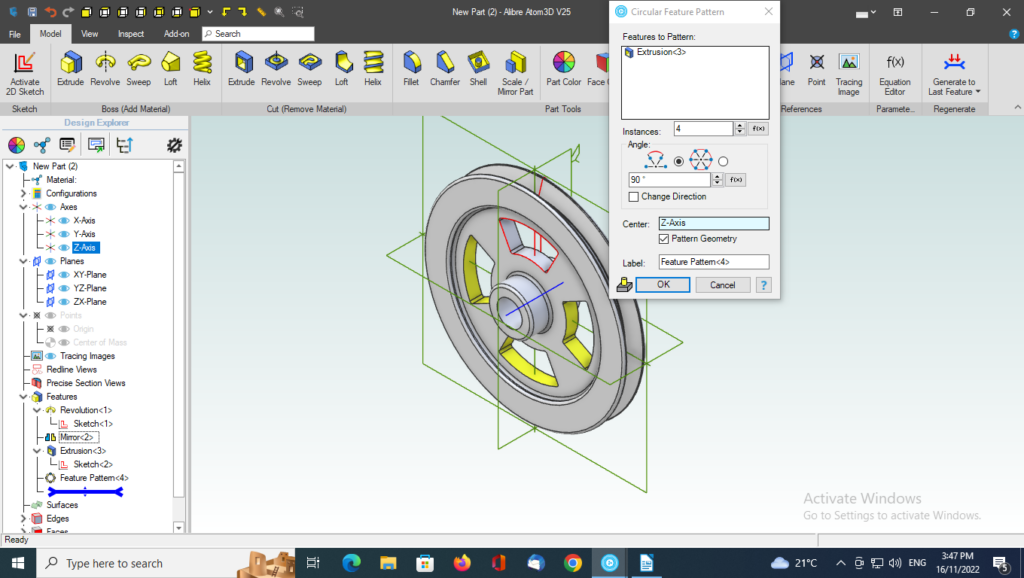
Make a workshop hoist
Des Bromilow is a very, very busy sheddie but is finding that these days moving heavy objects around the workshop is not as easy as it once was. Sheddie solution? Find an affordable and effective way to make a device to do the heavy lifting for you.
“The problem I am trying to solve: getting older and weaker. Since I don’t have a solution for the problem, I figure I can try to work smarter by designing and building something to reduce the impacts of the problem.
One impact is the challenge of lifting heavy things, such as chucks onto the spindle of the lathe or a vice or universal dividing head onto the table of a milling machine.”
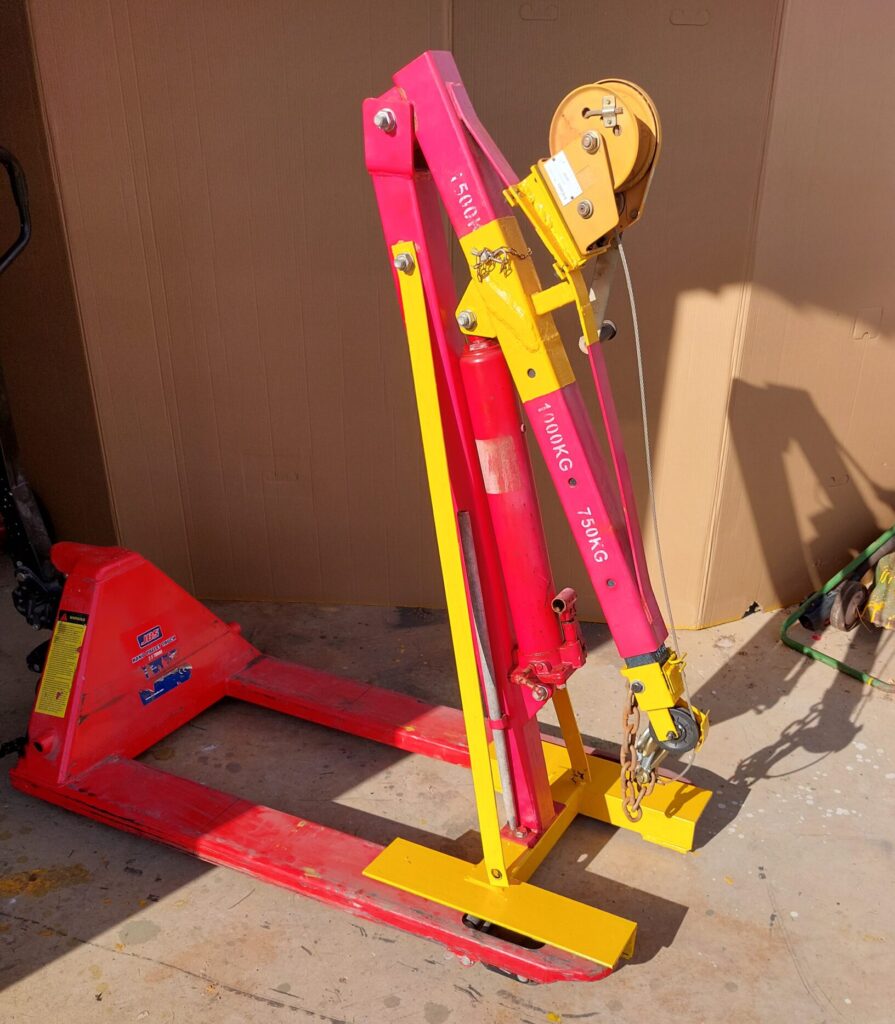
Music makers
Two Waikato men have turned their love of music into works of art in wood. Laurence Frangos-Rhodes is a young guitar maker and Menzshed member Keith Day thought he’d have a go at making a bugle out of wood!
“Looking for something to fill all his new spare time, [Keith] discovered the city’s Men’s Shed, a group of mostly woodworking enthusiasts shoehorned into a room in what had been the city’s electricity department workshops.
‘I had done some woodworking when I was at school but that was about the end of it. It wasn’t until I decided to join the Men’s Shed that I was introduced to wood turning,’ he says.”
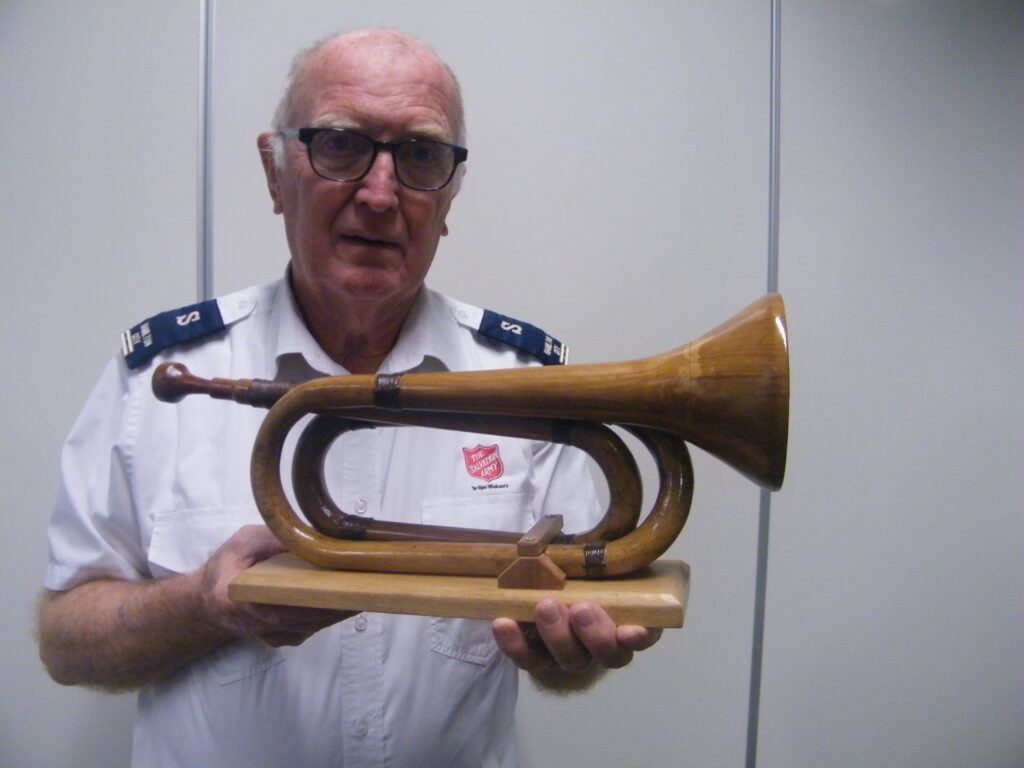
Off the grid
Treadling lightly — the rabbit hole of planned obsolescence
Our columnist Murray Grimwood loves nothing better than heading to the local auction house in search of something he can use or repurpose for his life off the grid. At a recent such visit he bought a nice table — or did he?
“Time is a great judge of quality. Long after the worst are gone, the best remain — sometimes hiding right under our noses. I recently bought — completely unwittingly — something that qualifies as ‘best’. Then, in planning what to do with it, I completely forgot the first rule of off-grid life, which is to simplify.
It took my better half to point this out, in her inimitable way.
Not only was she right, but her suggestion led to a happy few hours of work and learning, plus a sense of satisfaction with — and respect for — a lovely little piece of machinery. Let me tell the tale of a wet weekend, and a gem discovered …”
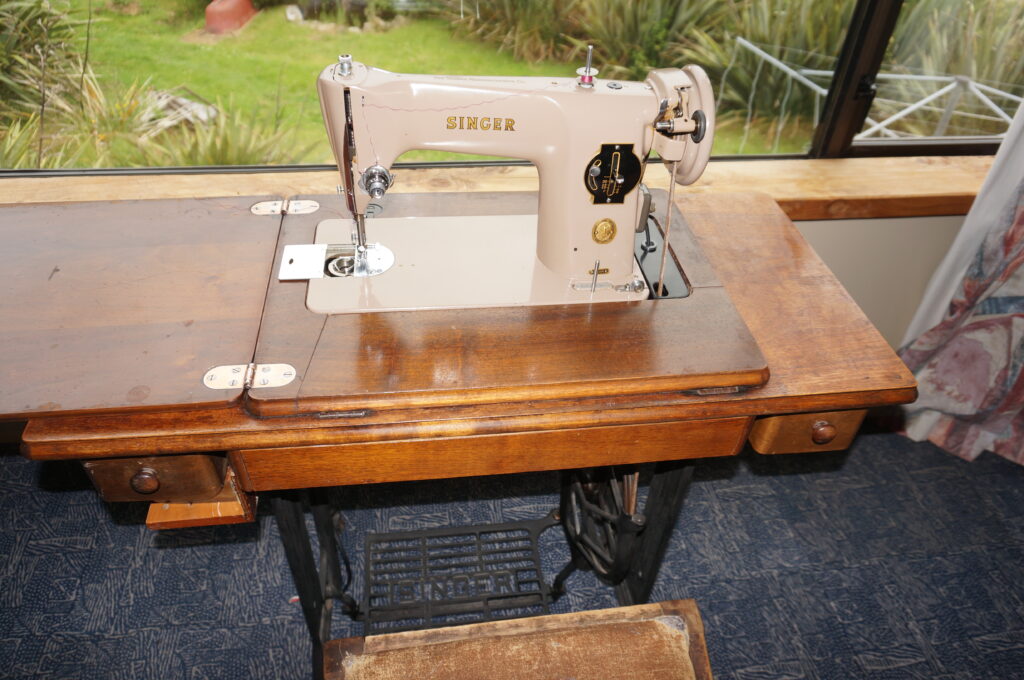
Getting under the house — the easy way
As we all know, there are few greater satisfactions than crossing a long-overdue task off our to-do list. Andrew Broxholme is another very busy sheddie and needs his list to get shorter, so he shares with us how he went about this home improvement project.
“If I have one bad habit, it’s that I have lots of things on the go. Things get mostly done; I tend to think, ‘I’ll finish it tomorrow’. Then, tomorrow, something else comes up — something that I really need to do, or that I just want to do more than I want to finish that other job. However, I’m working on that, and have had a few successes lately wherein I fought and won against ‘I’ll finish that tomorrow’, and actually did finish.
The latest was the baseboards around our new-build little cottage. Now, for whatever reason, it’s a legal requirement for code compliance to put boards around the foundations/piles to limit access under the house.”
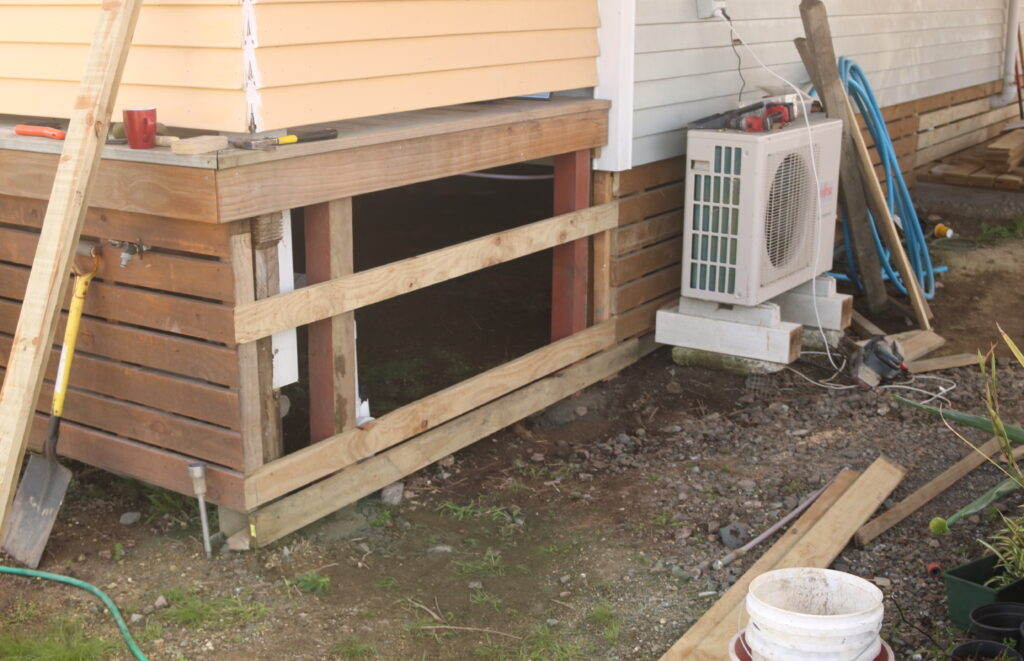
Tales for Makers — part four
Data model for embedded machine learning
Enrico Miglino is back this issue and continues with his fascinating electronics project. This is a part-work with a series of fictitious situations that give us an excuse to have fun making items that will eventually complete one large jigsaw puzzle. Some clever thinking needed with this one.
“In The Shed issue 105, we saw how Machine Learning (ML) could be embedded in a smart device such as the Arduino Nicla board. The following steps can be taken to activate the prediction features in our board:
Acquire data through sensors — usually part of the ML board creating a collection of samples.
Use the samples to define the data model with the ML platform — like Neuton.ai in our case.
Test the model with sample data on the platform using the Web.
Generate the software to embed the prediction features in the ML microcontroller.
Run the prediction offline on the programmed ML microcontroller.
This sounds very impressive, but a final problem arises: how to manage the microcontroller sensors to collect the initial dataset to create the model and send it to the neuton.io platform.”
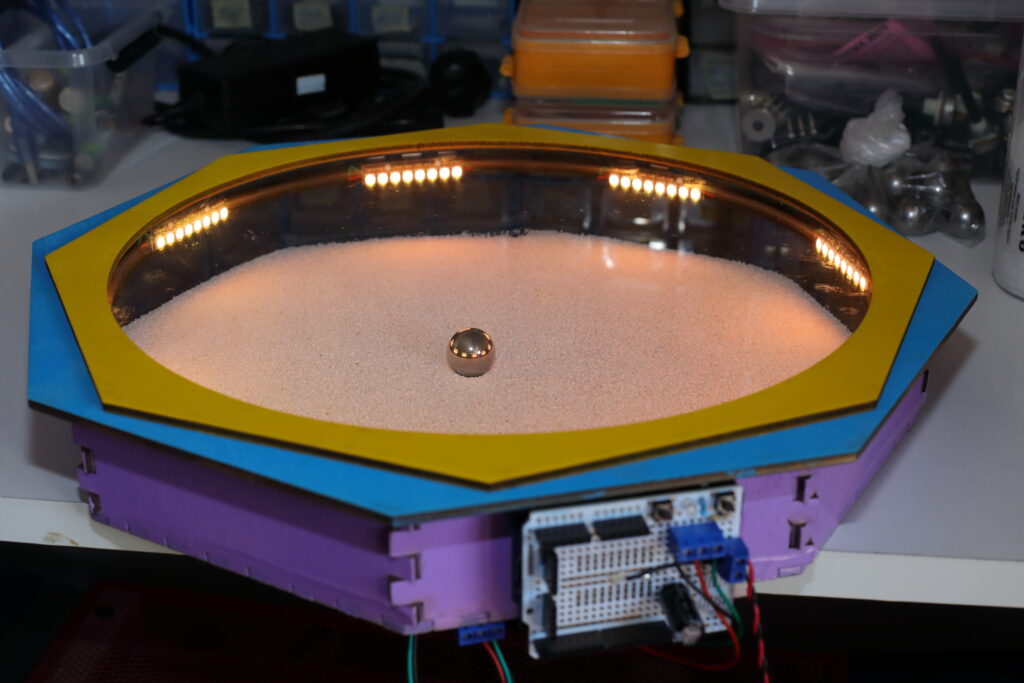
The Shed Shrink
Not all pots of gold are found at the end of a rainbow
We all need a break sometimes, and it’s good to get away. During his short break, our Shed Shrink learns that you never know what’s gonna turn up when you are polite and do the right thing; you may get rewarded with a treasure trove to enjoy.
“When we arrived at our destination, we met the bloke who was going to be our host. He seemed a nice and genuinely friendly sort of fella; I gave him 10/10. The small farm property where we were going to be staying was outstanding. We wandered around later in the evening and introduced ourselves to the host’s Highland cattle, a rustic breed that originated in the Scottish Highlands. These animals have huge horns and a shaggy coat, and are quite immense and imposing up close and personal.”

Small projects
Not all sheddie projects have to involve complexity and a vast array of tools; modest undertakings can be equally satisfying.
“A plea to the editor from Deigh Davies back in issue 101 of The Shed struck a chord with me. Often, I undertake small projects and, because of their size and simplicity, I tend to dismiss them as potential articles for this great magazine. To rectify that, I have put together this article covering some of these smallish shed excursions.”
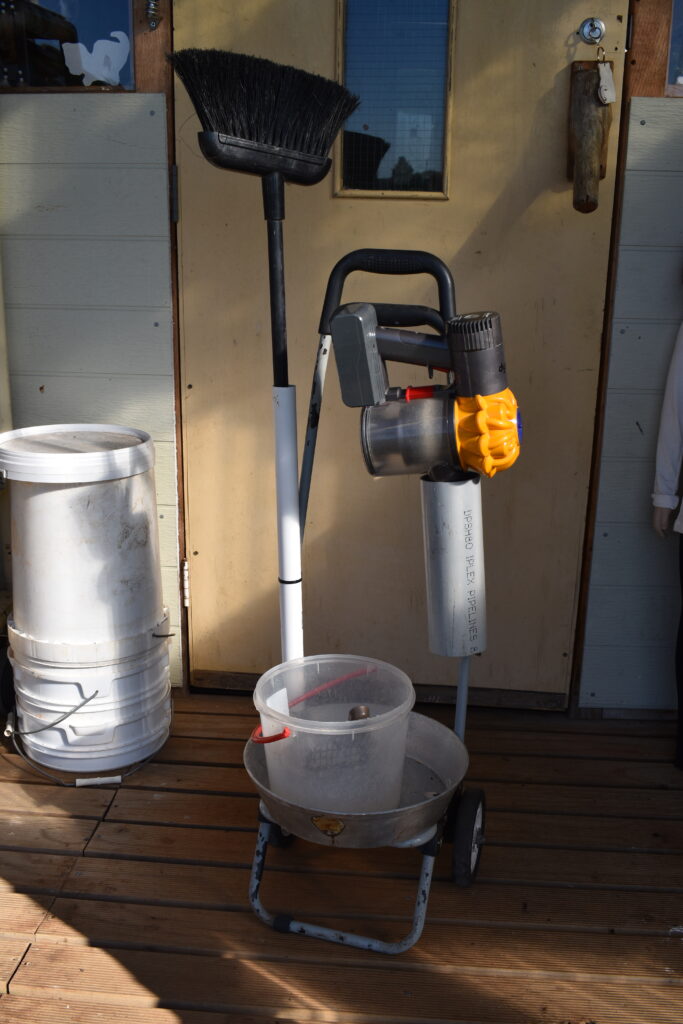
Restoring a steam boat — the queen of the river
The romance of travelling the Whanganui River by paddle steamer lives again, thanks to the labour of enthusiasts — and their work continues.
“As far as living history goes, Whanganui’s paddle steamer, Waimarie, is as good as it gets. It is the pride of the city, the last of its kind in New Zealand, and has been a fixture on the Whanganui River for more than 100 years.
When launched in 1900, Waimarie was the first registered boat in the country for the new century. In its first year of operation, it carried more than 25,000 passengers up to Pipiriki and back.
Today, Waimarie is as active as ever, introducing sightseers and private parties to the pace of life — and technology — of yesteryear, when our waterways were the highways and the Whanganui River was considered the ‘Rhine of the South Pacific’.”
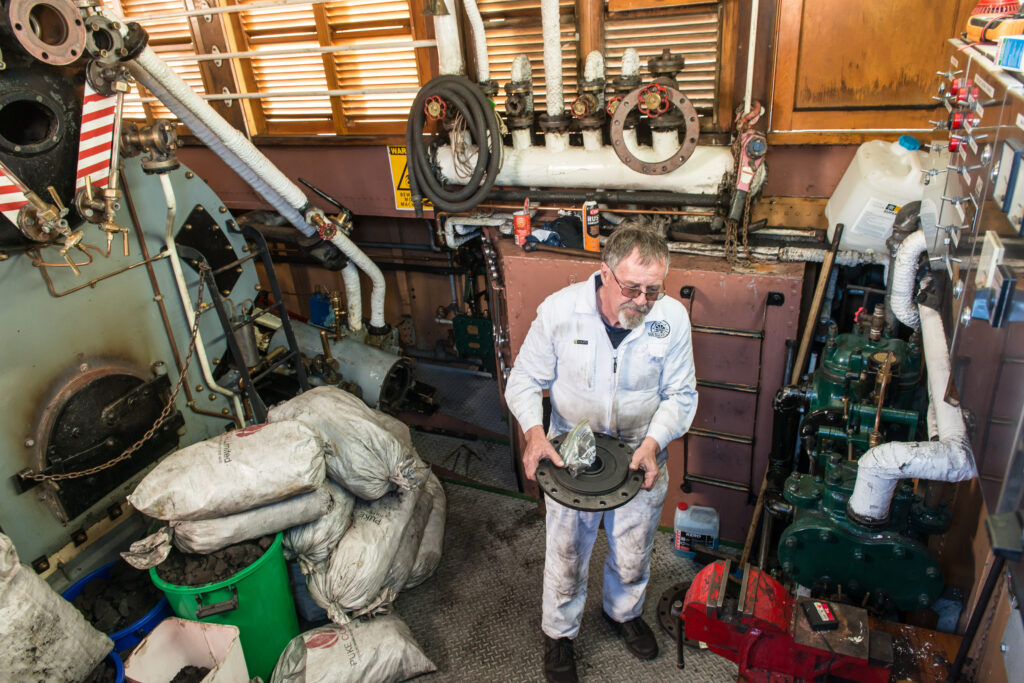
Back o’ The Shed
New Zealand’s link to the development of meteorology
The Shed’s founder, Jude Woodside, has been waiting many months for suitable weather to pour the slab for his new shed. However, the rain continues so he turns his mind to the clever act of weather forecasting and the part a New Zealander had in helping set up some forecasting tools.
“Upon his return to England, our second Governor, Captain Robert FitzRoy (26 December 1843 – 18 November 1845) — previously the captain of HMS Beagle — set up the beginnings of what would become the Meteorological Office (Met Office). He established FitzRoy Storm Barometers in ports around Britain, primarily for fishing boats. FitzRoy also developed a system of weather data collection, using the captains of ships to record weather conditions on their voyages.”
To purchase a copy of this magazine, a back issue, merchandise, a magazine print or digital subscription, head to our online store.
